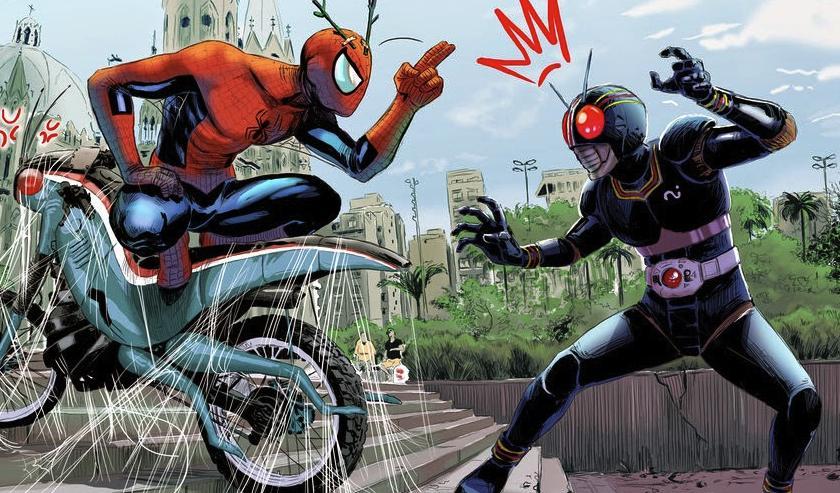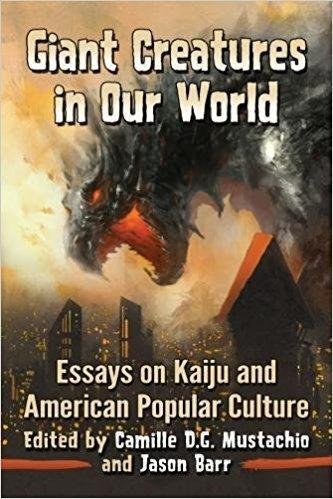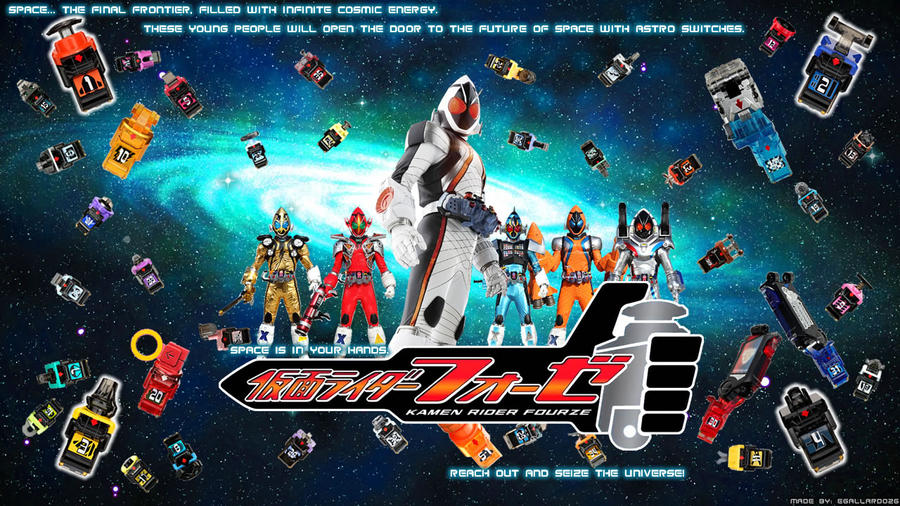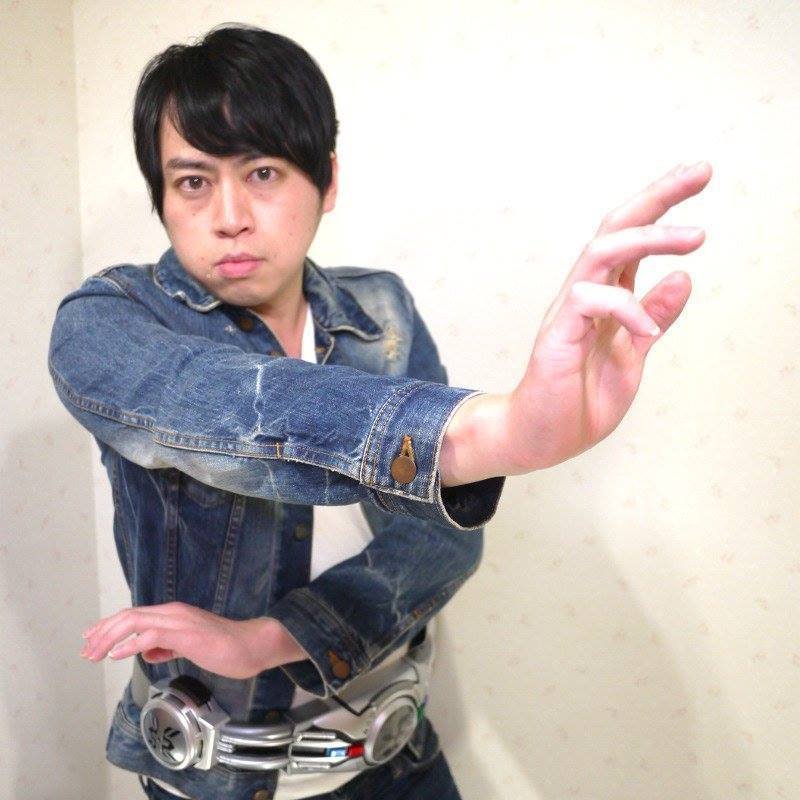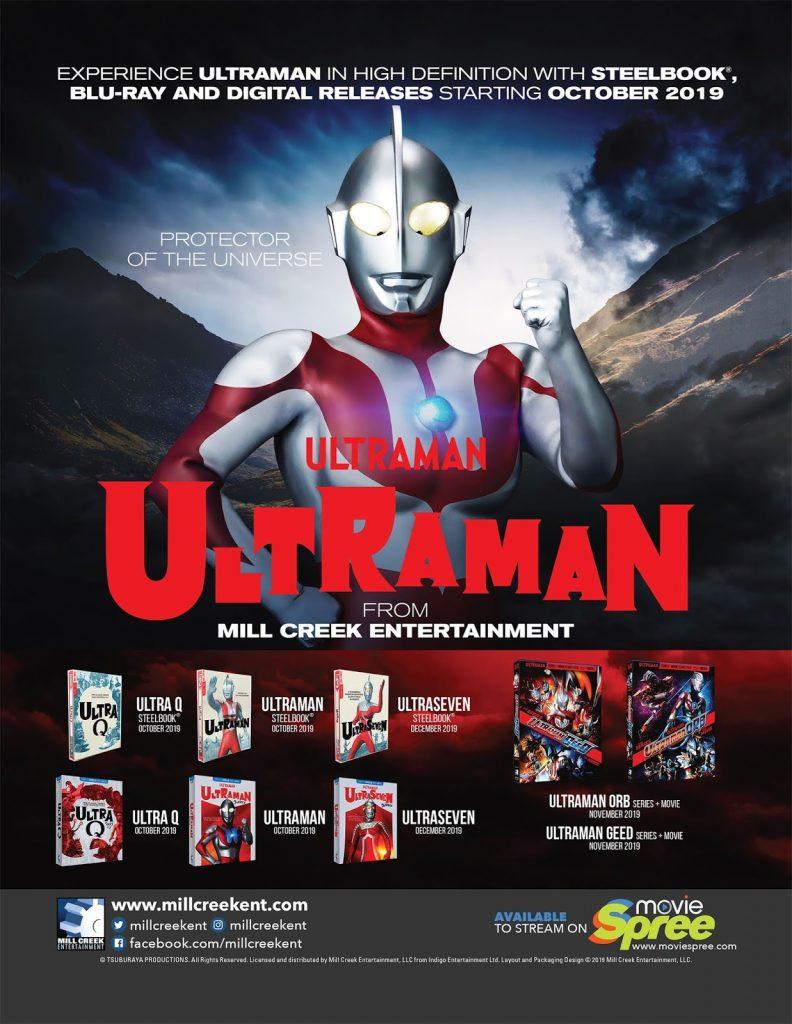Welcome to the second installment of Scholars Talking Toku’s interview with Seth Kim; Assistant Professor in the Program of Cinema and Media Arts and Asian Studies at Vanderbilt University. Kim is the author of several essays on Japanese superheroes and tokusatsu including “Kamen Rider vs. Spider-Man and Bat-Man” which appeared in the book Giant Creatures in Our World: Essays on Kaiju and American Popular Culture (2017, McFarland Press) edited by Camille D.G. Mustachio and Jason Barr. My own essay, “Notes from the Land of Light: Observations on Religious Elements Seen in Ultraman”, was also published in this same collection so we both recommend you pick it up!
In the first half of our interview, we discussed Kim’s essay “Kamen Rider vs. Spider-Man and Bat-Man” as well as his thoughts on Kaizoku Sentai Gokaiger. In this second half we discuss we’ll discuss the influence of American comics on pioneering manga-ka, the connection between Japanese religion and kaijū, how every Japanese superhero is essentially The Punisher, and why Kamen Rider Fourze may be the most subversive show Toei’s ever made.
JM: So I definitely think there’s a lot of evidence for this interplay between the spheres of Japanese and American superheroes, especially early on in the decade of the 1970s.
SK: So my question for you then is how do you think the Japanese learned about these characters? Because even Americans weren’t all that conversant in American superheroes before the advent of the big blockbuster movies in the last two decades. Do you think it was, like you mentioned before, the producers of these different companies being in dialogue with each other?
JM: I imagine it was more the manga-ka themselves. People like Shotaro Ishinomori and Go Nagi. The producers definitely played a part in it because, for example, in the classic case of Tohru Hirayama, who was the big shot producer at Toei who really started the whole superhero genre for them, that was his big epiphany. To go out and hire guys like Mitsuteru Yokoyama and Ishinomori who already did this stuff in comics and have them create these shows. And these guys were certainly familiar with American comics because sometimes you find really blatant examples of them copying stuff. Like I’m a big fan of Shigeru Mizuki’s stuff, love his Kitaro manga series, but nevertheless you look at some of his early work and it’s blatant plagiarism. He has a character called Rocketman who is clearly Superman, and another called The Helpful Hopper who is Bugs Bunny.
But to get back to your essay, something else that you point out that I thought was interesting because of my own background in religious studies is that you say that Shinto as a religion was in a period of decline in the mid-1950s right when the kaijū genre was coming into prominence and I’m wondering if you could elaborate on that.
SK: So that comes out of my research of the immediate post-War period, and I think that at least part of that, it just seems to me, the way I approach post-War Japan is that this is a period of incredible ambivalence where there is this constant push and pull of people trying to reconcile what has happened in their very recent history and what’s going to happen moving forward. So you have this national dialogue about who we are as a nation, what is our cultural and historical identity, and what are the things which got us in this situation and how are we going to get out? And one of those things is science. Science got us into this mess but simultaneously it’s also going to get us out because it’s not like we can turn our backs on industrial modernity even though this was something in relationship to colonialism and Japanese imperialism which exactly caused so much ruin. So I think from what I’ve read and understood is that there’s this emerging discourse about backwardness and primitivism and how this relates to certain issues like the divinity of the emperor and other pre-modern traditions that Japan now has to move away from because it was precisely these things which caused them to fall behind the US and the Allies. So as a result Shinto is something that gradually recedes and becomes frowned upon but in the same way that militarism is also frowned upon but that doesn’t mean that any of it goes away. And I don’t even think that it becomes repressed it just gets redirected and rerouted. Which is why I would agree with you that these things do still reappear they’re just re-codified. There is still animism and these totemic ideas in Japanese culture, only in the science-fiction framework.
JM: That’s right. And relates to what I think is the only really serious omission from my essay on Ultraman and that is that I somehow forgot to mention that Ultraman’s creator, Eiji Tsuburaya was a devout Catholic. So it’s not that there are all these Buddhist ideas in Ultraman because the creator was Buddhist but because these ideas are hardwired into the larger framework of Japanese culture from hundreds of years ago.
Let’s move on to your essay “Human/Cyborg/Alien/Friend” which deals with Kamen Rider Fourze. So Fourze was a series that I watched religiously when it was airing and that’s not something that happens often with me and Kamen Rider. I’m much more of an Ultraman and Super Sentai kind of guy. But I did watch Fourze and I was really intrigued that you wrote an article about it in which you describe it as being exceptional not only as a Kamen Rider series but as a Japanese superhero series in general. Would you like to explain why exactly you find it to be so exceptional?
SK: So this again really goes back to my work in general and the academic and scholarly traditions that I position myself in. And it’s definitely overly critical, but I’m just constantly asking big questions about how we as people get into certain situations. So I generally look at film and media in relationship to ideology. And because I work on really broad objects, mass-culture and mass-media objects, I tend to find that most mass-media has a rather troubling ideology which often perpetuates a culture of violence. Like when I teach, I ask my students what their earliest cultural memory is – something that they either read or watched – and at least half of the time it’s something related to violence. Now usually it’s what people refer to as ‘pro-social violence’ where you have that good guy versus bad guy dynamic, but even then it’s ultimately still violence. And in the Japanese context when looking at the post-War atmosphere, for me it’s about reconciling and dealing with the utter catastrophe of the atomic bombs and figuring out how to negotiate and deal with that reality. A comparable analogy that resonates with American audiences right now would be how our media reflects how we are still trying to deal with the reality of 9/11.
So then the thing about Fourze is that very rarely when I engage with media do I expect to find an exception to this rule. I generally just anticipate a similar set of politics, a similar kind of ideology, and similar strategies of justification along moral and ethical lines about why violence is a legitimate means of accomplishing one’s ends. And because of that when I finally watched Fourze I found myself absolutely floored by its attitude towards interpersonal politics and how people relate one another, which is absolutely unlike most of the things that I see. Because it’s not a story about revenge. It’s not about the terrible things which Japan has had to endure, nor for that matter about the terrible things which Japan has done unto others. Rather it’s a story about genuinely moving towards something else, moving past resentful history and memory and toward new politics. And that occurs through the main character of Gentaro/Fourze. But Fourze is fairly thorough and to me it’s remarkable that what is ostensibly a children’s TV show – which as we’ve already talked about, in Japan is not a knock – is doing something that is very intellectually, politically and philosophically sophisticated, much more so than even, let’s say, a lot of art films that people watch. And in that sense I think it stands out. And again, I’m not an authority on tokusatsu, I haven’t seen everything, I haven’t even seen every Kamen Rider, but from what I have seen, I have yet to see any other series that goes to the same kind of degree in what it’s trying to say and accomplish, which is there are better ways for people to interact with and relate to one another.
JM: So what you’re saying, if I’m understanding you correctly and understood your essay, is that part of what makes Fourze so remarkable is that it’s not a revenge narrative nor is it a story where the villains are made to pay for their crimes against humanity with their lives. In fact, one of the things that I remember finding so surprising about Fourze when I originally watched it was that in the end Fourze lets the lead bad guy, Mitsuaki Gamou, live. And that’s unusual because as anyone who has watched enough tokusatsu is bound to realize, one of the things that really separates Japanese superheroes from their American counterparts is that…
SK: …they kill. All the time.
JM: All the time. Every Japanese superhero is The Punisher.
SK: And that’s one of the things that I think is so fascinating. It goes back to the differences between Crimson Tide and Gokaiger. There’s a lot of moral hand-wringing in American narratives including in superhero stories. I just saw an article the other day titled ‘When Is It a Good Time to Release Netflix’s The Punisher series?’ And the answer was there is no good time. Especially not in contemporary America. And you also see the complaints whenever there’s a new DC comic where Batman kills someone or a movie where Superman kills someone, because it’s seen as going against the ethos of those characters. And it points to these kinds of expectations and standards that we have towards superhero narratives in an American context.
But I think that in the Japanese context I would say that I haven’t thought about it too much, aside from what I’ve already published, but I think partially it’s about the suspension of disbelief. Because I don’t think the Japanese have the same strict expectation that what happens in a science-fiction narrative should also have some kind of direct connection to reality. And what that means is that it’s fine for a superhero to kill because there is no real death and no real repercussions and no idea that this is what should happen in reality. And what was really eye opening for me was listening to Colette Balmain talk about this and say that in order to understand Japanese cinema one has to understand Japanese manga in that both of these mediums are more referential than they are representational.
But there’s also the fact that there is clearly a difference in the relationship between the Self and the enemy Other, and what’s fascinating to me and what I would suggest is that in an American superhero narrative, there is an ontological difference between the villain and the hero, so that even though we might not be willing to kill that villain there is still this idea that that individual is irredeemable. And it’s an ideology that underlies the kind of perpetual problem of Batman for example. Because there is absolutely no hope that the Joker will ever be redeemed or rehabilitated but Batman at the same time can’t kill him, but because he’ll always be a criminal you’re left with this dilemma of what to do about him which is simultaneously also the underlying justification for the American prison system. And this is a point I try and make in all of my articles which is that one of the major differences in Japanese media is that the partition which separates the superhero from the supervillain is paper-thin. Which is why one of my favorite narrative devices in when a villain becomes a hero, which is something that you see in Dragonball, Naruto, Zyuranger, and in Kamen Rider Fourze. So it’s this weird contradiction that works in a different way where you’ll kill the villain but at the same time acknowledge that they are exactly like us and maybe that’s why we’re killing them, I don’t know.
JM: Another claim that you make in this essay, and I’m just going to quote you here, is that in Fourze “it is not that the heroes merely augment themselves with equipment; instead, they rely on actual transformation on the bodily level…suggest[ing] an entirely different conception of the human body.” (55 & 58). I found this claim particularly striking because it is very different then the assertion made by scholars like Tom Gill and Susan Napier in their work on Japanese superheroes. Gill in particular makes this point that while American superheroes often have superhuman bodies – bodies that are non-human (i.e. extraterrestrial or semi-divine) or mutated – Japanese superheroes are regular people who are reliant on technology or magic to give them superpowers be it the ranger’s morphers, Kamen Rider’s henshin belt or Sailor Moon’s wand. Which is why there’s a recurring plot point in many of the Kamen Rider series where the villains decide to just try and steal the hero’s belt because if he can’t transform then they’re fine. But you seem to be saying something very different.
SK: Well I think they sometimes try to have it both ways. In a series like Fourze where, yes, there is an episode where Kamen Rider Meteor is robbed of his belt and therefore his powers and abilities, it does become clear that the belt is prosthesis. But I’ll stick to my point because if you remember, throughout the original Kamen Rider they refer to the heroes as Kaizo Ningen; literally “Enhanced Humans.” So they’re clearly more than just humans in suits. Even in a series like Gundam there’s the issue of transformation and mutation on a bodily level. That’s what the Newtype is where you have this evolutionary change in the human body. And then there’s the Cyber Newtype which is the scientifically augmented or forced change, like with the character Four Murasame.
But to get back to tokusatsu, the fact that they are called Enhanced Humans, the fact that the incantation they use is Henshin which literally means “metamorphosis,” and the fact that on a narrative level – unlike in American comic books where Batman is Batman even without the costume – there is a degree of fluidity or perhaps lack of stability where the very contours of these character’s identity and humanity becomes a question. No one questions if Batman is still human after he puts on his costume. Or even the X-Men. They’re mutants but the point of that whole story is that ultimately they are still human. But in the Japanese tradition those questions are asked about Kamen Rider and they never really go away. Are you a human, are you a cyborg, are you a robot, are you a bakemono, are you a kaijin? These are all possible categories for what these characters are. So when Gentaro, or anyone of them, activates their driver it’s not just a suit coming down on top of them like Ironman. They are actually becoming something else. So there isn’t that sense of stability that you get with American superheroes. In Japan it’s almost as if everything is much more provisional where even the heroes themselves only last one season and then they get recycled and become a new version of that same hero.
JM: And all this reminds me of Patrick Drazen’s book Anime Explosion! (Stone Bridge Press, 2002) where he talks about the dynamic of Japanese heroes and villains and references William R. LaFleur’s study of abortion in Japan as found in his book Liquid Life (Princeton U. Press, 1994). Because there’s never been any historical debate about abortion in Japan and LaFleur argues that this is because of the underlying Buddhist assumption of the reality of reincarnation. That life is liquid and can change from one body to the next. And that same ideology seems to guide the kind of narratives we’ve been discussing here. Whether it’s the issue of killing your antagonist, or a villain transforming into a hero, or a hero transforming into something inhuman. And this all contributes to what makes Japanese superhero narrative so unique.
SK: Exactly.
Check out artist Kikomauriz for more of his stellar artwork.
You might also like:
Scholars Talking Toku: Interview with Seth Kim – Pt. 1
Even the Original KAMEN RIDER Loves BLACK PANTHER
N.Y. MAXMAN 2018 Trailer: Rangers & Riders to the Max

